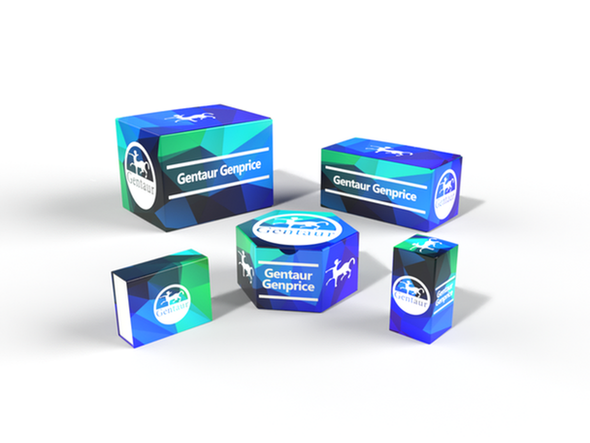Description
LXR-A Antibody | 5577 | Gentaur UK, US & Europe Distribution
Host: Rabbit
Reactivity: Human, Mouse, Rat
Homology: N/A
Immunogen: LXR-A antibody was raised against a 15 amino acid synthetic peptide from near the amino terminus human LXR-A.
The immunogen is located within amino acids 50 - 100 of LXR-A.
Research Area: Innate Immunity
Tested Application: E, WB, IHC-P, IF
Application: LXR-A antibody can be used for detection of LXR-A by Western blot at 1 - 2 μg/mL. Antibody can also be used for immunohistochemistry starting at 5 μg/mL. For immunofluorescence start at 20 μg/mL.
Antibody validated: Western Blot in rat samples; Immunohistochemistry in rat samples and Immunofluorescence in rat samples. All other applications and species not yet tested.
Specificiy: N/A
Positive Control 1: Cat. No. 1464 - Rat Liver Tissue Lysate
Positive Control 2: N/A
Positive Control 3: N/A
Positive Control 4: N/A
Positive Control 5: N/A
Positive Control 6: N/A
Molecular Weight: Predicted: 44, 49 kDa
Observed: 46 kDa
Validation: N/A
Isoform: N/A
Purification: LXR-A Antibody is affinity chromatography purified via peptide column.
Clonality: Polyclonal
Clone: N/A
Isotype: IgG
Conjugate: Unconjugated
Physical State: Liquid
Buffer: LXR-A Antibody is supplied in PBS containing 0.02% sodium azide.
Concentration: 1 mg/mL
Storage Condition: LXR-A antibody can be stored at 4˚C for three months and -20˚C, stable for up to one year. As with all antibodies care should be taken to avoid repeated freeze thaw cycles. Antibodies should not be exposed to prolonged high temperatures.
Alternate Name: LXR-A Antibody: LXRA, LXR-a, RLD-1, LXRA, Oxysterols receptor LXR-alpha, Liver X receptor alpha
User Note: Optimal dilutions for each application to be determined by the researcher.
BACKGROUND: LXR-A Antibody: LXR-A belongs to the Liver X Receptor family that encodes highly homologous transcription factors. Like the highly homologous LXR-B, LXR-A forms heterodimers with the retinoic acid receptor RXRalpha, function as sensors for cellular oxysterols which when activated, increase the expression of genes that control sterol and fatty acid metabolism and homeostasis. Recent experiments have indicated that the LXRs can also modulate both innate and adaptive immune responses. Human and mouse tumors produce LXR ligands that inhibit CCR7 expression on maturing dendritic cells (DCs) , thereby allowing tumor immunoescape. In mouse models, it was shown that ablating LXR-A signaling led to an immune-mediated strong inhibition of tumor growth, suggesting that manipulation of this pathway may be a viable anti-cancer approach.


![[KO Validated] NSD3/WHSC1L1 Rabbit pAb [KO Validated] NSD3/WHSC1L1 Rabbit pAb](https://cdn11.bigcommerce.com/s-1rdwiq712m/images/stencil/590x590/products/96251/96790/gentaur-genprice__26005.1661610467__29809.1661628092__75433.1661676199__77988.1661684280__64362.1661692443__33194.1661944064.png?c=1)



